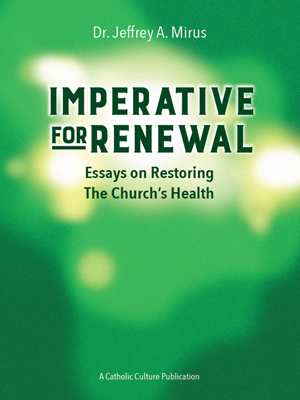Overview of Religious History of Syria
by Unknown
Chronology Of Christianity In Syria
34: the conversion of Saul of Tarsus on the road to Damascus. Already Jesus was known in Syria.
46-48: Paul's first mission to Antioch. Jesus' disciples were called Christians for the first time in this city.
End of 1st century: Christianity spread to Edessa (today, Urfa, Turkey).
From about 110: St. Ignatius, Bishop of Antioch, inaugurated an era of martyrs.
2nd-4th century: a school of theology developed in Antioch, one of whose most prestigious disciples was John Chrysostom. Monasticism flourished from the 4th-5th century with thousands of ascetics, monks and cenobites. St Simeon the Stylite and St Maron lived not far from Aleppo.
4th century: Edessa became the site of a Syrian-Aramaic theology school. St Ephraem, Bardesane and Afraate spread Christianity in inner Syria.
4th-6th century: Christians spread to other areas.
5th century: Syria was at the heart of the Monophysite controversy, and the Bishops' sees were contended by Monophysites and Catholics. The Council of Chalcedon failed to end the disputes. St Maron's monks, faithful to Rome, began to seek refuge in Lebanon.
7th century: At the Umayyade court in Damascus, many professionals were Christians. Caliph Omar dismissed Christian officials and his successor obliged them to wear distinctive dress. In 722 there were still 3.8 million Christians in Syria out of a population of 4 million.
8th century: Abbasid Caliph al-Mahdi forced Arab-Christian Tannukhs to convert to Islam.
855: Christians in Homs revolted and their leaders were crucified at the city gates.
9th century: Islam was gaining the upper hand: many churches became mosques and, by about 900, half the Syrian population was Muslim.
12th-13th century: Christians in Syria had problems in areas controlled alternately by crusaders and Muslims. In 1124 Aleppo cathedral was made into a mosque.
1350: out of a population of one million, 100,000 were Christians.
1439: Jacobites took part in the Council of Florence but the fall of Constantinople and the Ottoman occupation of Syria was an obstacle to reuniting the Church.
16th century: The Orthodox, Jacobite and Armenian Christian communities were recognized by the Ottoman sultan as nations with their own courts and laws.
19th century: European pressure forced the Ottoman Empire to make reforms: the equality of all citizens was proclaimed, whatever their religion, and the personal statutes of Christians maintained.
1860: the massacres of Christians in Mount Lebanon spread to Damascus: 12,000 survived.
1915: Vast numbers of Armenians fled to Syria from massacres in Turkey.
Christians In Syria Today
Greek Orthodox
There are 500,000 divided into six Dioceses. Their leader is the "Patriarch of Antioch and all the East", and their liturgy is in Arabic. Damascus has been the Patriarchal See since 1342.
Greek Catholics (Melkites)
The Greek Catholic Church of Antioch was born of a return to Catholicism of part of the Greek Orthodox Church in Antioch. In 1724, the election of Patriarch Cyril Tanass who favoured union with Rome annoyed Constantinople, which sent another Patriarch to Damascus, dividing the community. Tanass and some Melkites were forced to take refuge in Lebanon and others emigrated to Egypt and Palestine. Those who remained were fiercely persecuted and massacred by the Ottomans in Aleppo in 1817. A revolution by Greece deviated hostility towards the Orthodox and in 1837 the Melkites obtained a leader. Today there are 200,000 Melkites in five Dioceses.
Armenians
The Armenian Church was inspired by St Gregory the Illuminator who made Armenia Christian in the third century. It is divided into Orthodox (Gregorians) and Armenian Catholics. The forced deportation to Aleppo by the Turks in the First World War and the exodus of Armenians from Cilicia and Alexandretta considerably increased the community in Syria. The Armenian Gregorian Catholicos of Sis and the Armenian Catholic Patriarch of Cilicia live in Lebanon. Today the 150,000 Armenian-Syrian Gregorians and 20,000 Catholics live mainly in Aleppo, Jazira and Lattakia. There are two Armenian Catholic Dioceses. Armenian liturgy is based on traditions from Jerusalem, Cappadocia and Byzantium.
Syriac/Syrian
The Syrian Church was born in the mid-6th century from the dispute about the two natures of Christ. Jacob Baradai ordained Monophysite priests and Bishops, setting them beside the Catholic hierarchy. This Jacobite Church was joined by most of the Syrians who opposed Byzantine rule. In 1662 a former Jacobite Bishop became the first titular of a Syrian Catholic Church; but this was a short-lived experience and the new Church was only re-established in 1783 under the aegis of the Maronite Patriarch, who gave it asylum in Lebanon until the official recognition of the "nation of Syrian Catholics" in 1845. Most "Syrians" are former refugees from southern Turkey. These 60,000 Orthodox (Jacobites) and 40,000 Catholics are mainly based in Jazira and Aleppo.
Assyrians and Chaldeans
Assyrians are Christians who belonged to the Nestorian Church established in Mesopotamia. Chaldeans are those who returned to Catholicism in 1681. The 40,000 Assyrian-Chaldeans in Syria are small minorities sorely tried by wars and frequent forced exile. There is one Chaldean Diocese: Aleppo; the Chaldean Patriarch who has the title of Babylon resides in Baghdad. The liturgy is celebrated in Chaldean and Arabic.
Maronites
The monks of St Maron founded the Church in Antioch by the Orontes River. Maronites are Catholic. Persecuted by the Monophysites and then the Arabs, the majority were forced to take refuge in Lebanon. In Syria there are only 25,000 Maronites who have three Dioceses and live in Aleppo, Tartus, Lattakia and Damascus. The see of the Maronite Patriarch (who also has the title of Antioch) is in Bkerke, Lebanon.
Latins
The 3,000 Latins, mostly Catholics from Palestine or Europe (French and Italian), are under the jurisdiction of the Vicariate Apostolic of Aleppo for Latins, established in 1762. The majority live in Damascus and Aleppo.
Protestants
A few thousand members of various denominations form the Superior Evangelical Council of Syria and Lebanon.
Relations with The State
In Syria, Islam is not the state religion. The country is secular, which ensures equality for members of other religions. Christians can buy land and build churches. Clerics are exempt from military service and schools provide Christian and Muslim religious instruction. Unlike other Arab countries, Syria represses Muslim fundamentalism. Christians support the government that guarantees their survival. Emigration is a serious problem for the Christian churches; at least 250,000 Christians have left Syria since 1958. Rural Christians are constantly moving to the cities, because of Muslim pressure and the lack of structures.
Other Religions In Syria
Islam
There are about 12 million Sunni Muslims in the main Syrian cities, about 75% of the population. They follow the full Sunna, sayings of Mohammed as handed down by his companions, and obey the Grand Mufti, elected for life. Alawi Muslims, today 1,800,000, are followers of Aly, Mohammed's son-in-law. They are considered heretics by Muslim theologians. Contact with Crusaders led to syncretism to the point that they celebrate Christmas, Epiphany and Pentecost. The 200,000 Ismaili Shi'ites are so named because they follow the branch, which in the dynastic succession of the Imam stops at the seventh Imam, Ismail, rather than at the 12th, like the Iranian Shi'ites.
Druzes
The doctrines of this community were first propagated in Egypt. Their mysterious beliefs are based on a variety of books including works by Aristotle and the Psalms. They believe in reincarnation and do not allow polygamy. Thus they are considered heretics by other Muslims. Persecution has forced them to take refuge in southern Syria and in the Lebanese Chouf mountains.
Jews
Of all the religious communities the Jews, claiming 2,500 years of history in Syria, are the oldest. With the creation of the State of Israel, their numbers plummeted; in 1994 they were only 1,250, mostly in Aleppo. Government restrictions on journeys abroad were lifted only recently and Syrian Jews are now permitted to emigrate, although not to Israel. Many go to the United States.
© L'Osservatore Romano, Editorial and Management Offices, Via del Pellegrino, 00120, Vatican City, Europe, Telephone 39/6/698.99.390.
This item 3657 digitally provided courtesy of CatholicCulture.org






